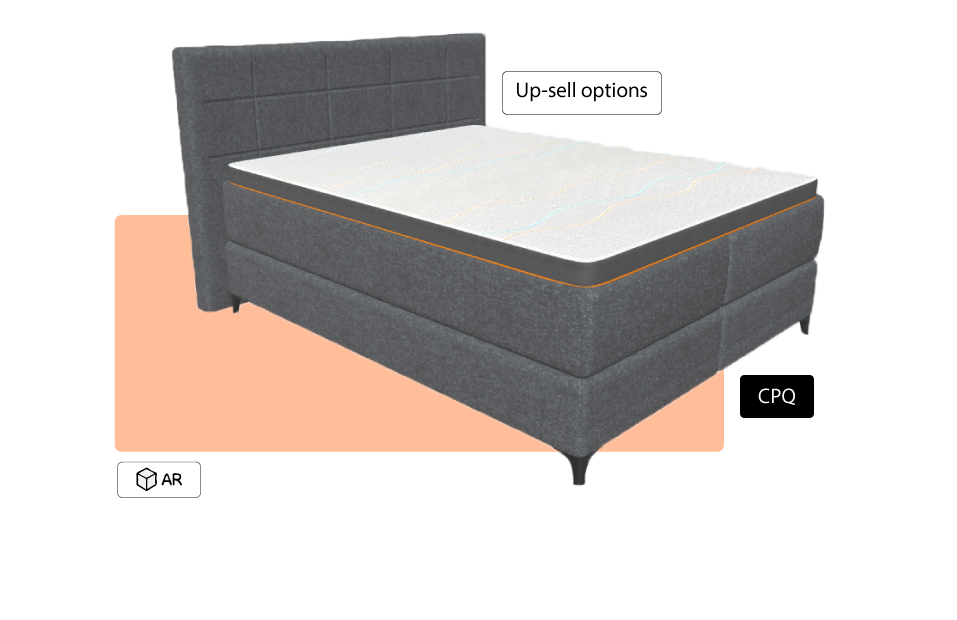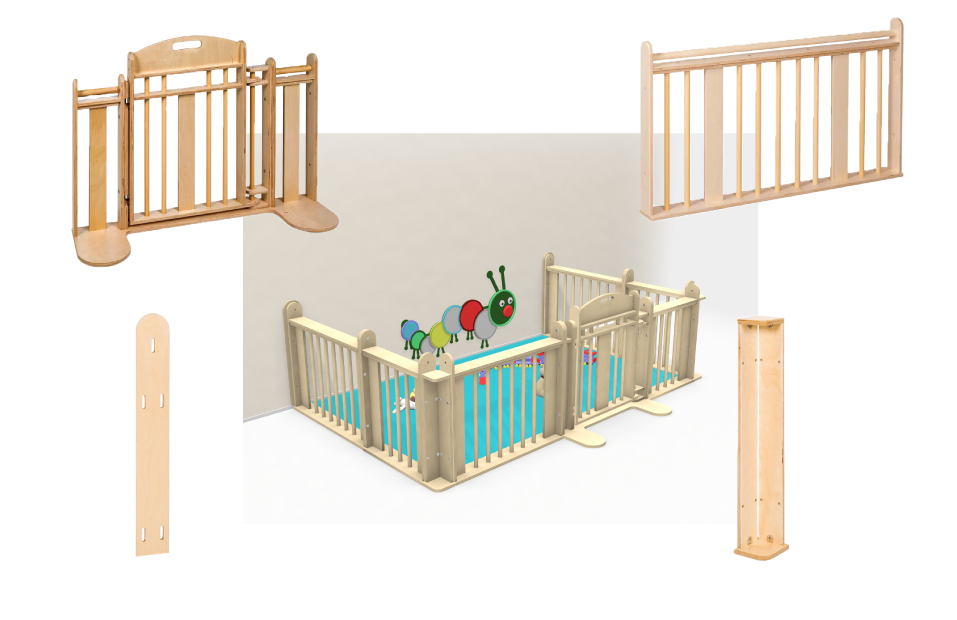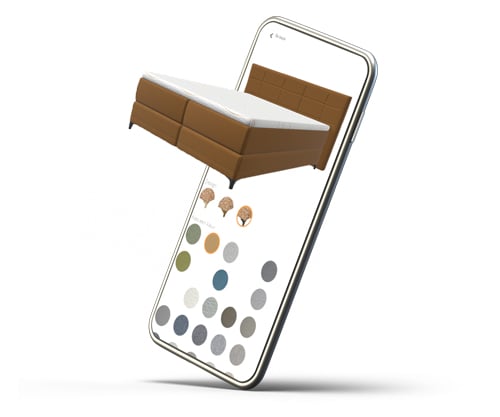The power of CPQ and 3D Configuration for your sales
Imagine you’re selling a modular sofa, a custom wardrobe, or a made-to-measure dining table. Every customer wants to choose their own size, color, fabric, and finish. Yet your sales team still spends hours creating quotes, double-checking pricing, and confirming that each combination can actually be produced.
That’s the exact challenge CPQ software (Configure, Price, Quote) and a 3D product configurator solve together. They turn product complexity into a scalable, error-free, and engaging experience that connects your sales, design, and production workflows.
Inhoud
- What makes product configuration so complex?
- What is CPQ software, and how does it actually work?
- What role does a 3D configurator play?
- How do CPQ and 3D configuration work together?
- Why is this combination especially powerful for furniture manufacturers?
- How does real-time pricing improve sales performance?
- What impact does visualization have on the customer journey?
- Can this system also support in-store and B2B sales?
- How does implementation work in practice?
- What are the most common mistakes and how can they be avoided?
- What kind of ROI can furniture brands expect?
- What’s next for visual CPQ technology?
- How to measure and optimize your configuration experience?
- The Bottom Line: CPQ + 3D = The future of your sales
What makes product configuration so complex?
A lot of industries are built on variation. No two products are the same and that’s both its beauty and its challenge.
Each choice affects:
- Pricing and margins
- Manufacturing feasibility
- Lead times and stock management
- Customer expectations
Without automation, this results in manual pricing errors, long quoting times, and frustrated customers. CPQ and 3D configuration remove those barriers by combining logic, visualization, and automation in one connected platform.
What is CPQ software, and how does it actually work?
CPQ software stands for Configure, Price, Quote: three steps that define modern, digital selling.
But how does it work in practice, and why does it matter?
- Configure: defines what combinations are possible. A sofa can’t have both wooden and metal legs; a wardrobe must stay within height limits.
- Price: calculates real-time pricing based on your data, including material costs, discount rules, and volume tiers.
- Quote: automatically generates a sales quote, bill of materials (BOM), and even production files.
In short, CPQ software makes it impossible to sell the wrong product. It turns complex product rules into automated, scalable sales logic, empowering your team and your customers to configure products with total confidence.
What role does a 3D configurator play?
If CPQ is the logic engine, the 3D configurator is the visual experience layer. It allows users to see every choice come to life instantly, in real-time 3D or augmented reality (AR).
Instead of reading descriptions, customers see fabrics, finishes, and dimensions. Instead of asking for technical drawings, they interact with their future product. This visual clarity doesn’t just enhance engagement, it builds trust and drives conversions.
How do CPQ and 3D configuration work together?
Here’s where the magic happens. While CPQ calculates what’s possible and what it costs, the 3D configurator shows the result in real time.
When a user changes an option, like switching the sofa fabric, the system:
- Updates the 3D visualization.
- Checks compatibility rules via the CPQ engine.
- Recalculates price and lead time.
- Updates the quote automatically.
This creates a closed feedback loop between visualization and pricing, every choice is validated, priced, and displayed simultaneously.
CPQ vs. 3D Configurator
| Function | CPQ software | 3D Configurator |
|---|---|---|
| Core purpose | Defines logic & pricing | Visualizes the product |
| Output | Prices, BOMs, quotes | Real-time 3D / AR display |
| User focus | Sales teams, operations | Customers, dealers |
| Main value | Accuracy, speed | Engagement, confidence |
Together, they form the foundation of visual commerce and the new standard for personalized, high-value product sales.
Why is this combination especially powerful for furniture manufacturers?
Because furniture is both technical and emotional. Customers buy what they can imagine and 3D visualization gives them that imagination.
At the same time, manufacturers need precise configuration logic to avoid costly production errors.
In other words, emotion sells, precision delivers. CPQ and 3D configuration combine both in a single digital experience.
The tangible benefits for furniture brands
- Faster quotes and fewer manual processes
- Real-time pricing aligned with production costs
- Immersive visualization that boosts confidence
- Fewer returns thanks to visual accuracy
- Centralized product data across all sales channels
How does real-time pricing improve sales performance?
Price is a major decision factor in furniture purchases. But static pricing can’t reflect the real cost of materials, finishes, or options. That’s where real-time pricing through CPQ changes everything.
When a user configures a product, the CPQ system dynamically updates the price:
- Material and supplier cost changes are reflected instantly.
- Optional features automatically trigger price adjustments.
- Tiered discounts or promotions are applied transparently.
This transparency helps customers make decisions faster and helps your business maintain healthy margins without manual recalculations.
See the 3d configurator in action at Heutink.
What impact does visualization have on the customer journey?
Buying furniture is a visual process. When customers can explore a product in 3D, their level of understanding and emotional connection skyrockets.
Studies from Google and Shopify show that 3D configuration can increase:
- Conversion rates by 2–3x
- Average order value by 20–30%
- Customer engagement time by up to 40%
Visualization removes doubt. Customers see what they’ll get, which leads to fewer abandoned carts and significantly fewer returns.
Can this system also support in-store and B2B sales?
Absolutely. While 3D configurators are often associated with online retail, they’re equally powerful in physical stores and dealer networks.
- In-store tablets or touchscreens let customers design their furniture in real time.
- B2B portals allow dealers to quote and order directly using the same CPQ logic.
- Omnichannel integration ensures consistent pricing and configuration across every sales touchpoint.
This is how brands unify their digital and physical experiences, and deliver consistent, personalized sales interactions everywhere.
How does implementation work in practice?
Deploying a visual CPQ system isn’t just about adding a 3D viewer. It’s a strategic digital transformation that connects product logic, pricing, and experience.
At Expivi, this typically follows a clear process:
- Scoping & data modeling: identify product attributes, dependencies, and price rules.
- 3D modeling: create optimized, web-ready assets for each configurable part.
- Logic definition: encode all product rules into the CPQ engine.
- Integration: connect CPQ and 3D data to ERP, PIM, and eCommerce platforms.
- Testing & go-live: validate pricing, visuals, and workflows before full rollout.
This structured approach minimizes risk and ensures your configuration engine is not only powerful but maintainable as your catalog evolves.
What are the most common mistakes and how can they be avoided?
Even powerful technologies fail when implemented without the right strategy. Here are a few lessons from years of experience with furniture brands:
- Focusing on visuals before logic.
A stunning 3D model is useless if it doesn’t align with real product rules. Start with your CPQ foundation. - Ignoring performance.
Large, unoptimized 3D models can slow the experience. Lightweight, modular assets ensure smooth interaction. - Forgetting integration.
If your configurator doesn’t sync with ERP or PIM systems, data gets lost. Integration ensures pricing, inventory, and production stay aligned. - Overcomplicating the interface.
Customers should never feel overwhelmed. A clean, guided design process performs best.
Before vs after using CPQ & 3D configuration
| Business area | Before using CPQ & 3D | After implementation |
|---|---|---|
| Quote creation | Manual, error-prone, spreadsheet-based | Automated, rule-driven, consistent |
| Product visualization | 2D photos or catalogs | Interactive 3D and AR experience |
| Pricing updates | Static, updated monthly or quarterly | Dynamic, real-time pricing |
| Customer experience | Limited customization | Guided, immersive, and self-service |
| Production handoff | Manual interpretation | Automated Bill of Materials (BOM) generation |
What kind of ROI can furniture brands expect?
ROI comes from three main sources:
- Operational efficiency: fewer manual quotes, fewer errors, faster order cycles.
- Sales growth: higher conversions and larger average order values.
- Customer satisfaction: fewer returns, faster communication, and visual trust.
Most companies see measurable ROI within 6–12 months of implementation. For many, it’s not just a sales tool, it’s a new way of doing business.
What’s next for visual CPQ technology?
The next evolution of visual commerce combines CPQ, 3D configuration, and AI. Imagine a system that learns from customer behavior and automatically suggests popular combinations or optimal pricing strategies.
As AI-generated assets and AR become mainstream, configurators will evolve from sales tools into complete product experience platforms, capable of connecting design, marketing, and production in real time.
Expivi is already investing in this direction: helping brands transition from static catalogs to living, data-driven 3D product experiences.
How to measure and optimize your configuration experience?
Implementing is just the start. The real power of CPQ + 3D lies in continuous measurement and optimization.
Track both macro and micro KPIs:
- Macro: conversion rate, AOV, quote-to-order speed.
- Micro: configuration time, AR views, quote downloads, and exit points.
Use this data to refine guided selling flows and improve overall conversion.
The Bottom Line: CPQ + 3D = The future of your sales
The combination of CPQ software and 3D configuration isn’t a luxury, it’s a competitive necessity. It empowers furniture brands to deliver immersive, data-driven, and error-free buying experiences that customers now expect.
When logic, pricing, and visualization work together, you don’t just sell products, you sell confidence.
The future of furniture retail is personalized, visual, and automated. The future is built with Expivi.
Discover how Expivi transforms product experiences and book a free 15 minute demo.


